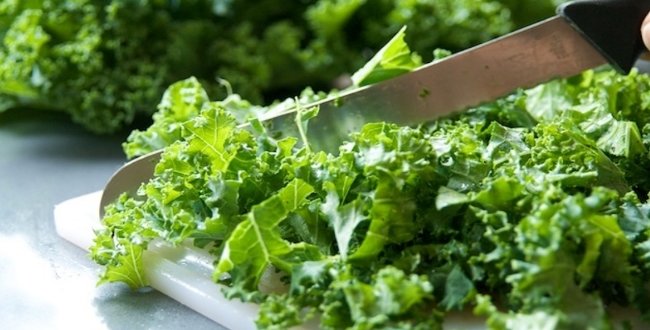Inexpensive And Easy Ways To Cook Nutritious Real Green Foods!
One of the most nutritious real foods is leafy greens because they are inexpensive, simple to cook and tasty! Not to say, green veggies are also readily available for most part of the year, in a variety of forms. This means to say at most farmers markets, you can get them at great prices.
We’ve found some recipes, tips and nutritional facts of leafy greens, plus 20 ways of cooking them! Share and Enjoy!
The Quick Lowdown
- NUTRITIOUS– Lots of nutrients in just one serving! Vitamins, essential minerals, fiber and much more.
- VERSATILE– Easy to add to lots of different recipes. Like smoothies for breakfast, salad at lunch, sauteed at dinner.
- DETOX– High levels detoxifying, anti-inflammatory, and cancer fighting compounds
Leafy Greens Nutritional Facts
Not many foods can compare to the high nutritional value of leafy greens. Researchers are finding that eating your greens may be even more important than previously imagined. In putting together this article I found lots of quotes that stated “it was common for our ancient ancestors to eat up to six pounds of leaves per day“. I could not find a accredited source for the quote but I can see that it makes sense. Recent research shows that a gene that is essential for producing critical immune cells in your gut, responds to the food you eat—specifically leafy green vegetables (Dr. Mercola).
We now know that these greens contain an array of antioxidants and other disease-fighting compounds. Researchers also believe that these vegetables play an important role in controlling food allergies, inflammatory diseases and obesity, and may even prevent the development of bowel cancers (Walter and Eliza Hall Institute).
Here’s a nutritional breakdown of the top readily available leafy greens:
Kale
- Excellent source of vitamins A, C, and K
- High in Calcium (for a vegetable)
- Also supplies Folate and Potassium
Collard Greens
- Excellent source of vitamins A, C, and K
- Good source of Folate, Manganese, and Calcium
- Cancer preventatvive glucosinolates (glucoraphanin, sinigrin, gluconasturtiian, and glucotropaeolin)
- Similar in nutrition to Kale but more chewy with a stronger taste
Swiss Chard
- Excellent source of vitamins A, C, and K
- Good source of Magnesium, Manganese, Potassium, Iron and Vitamin E
- At least 13 different Polyphenol Antioxidants, including Kaempferol and Syringic Acid
- Unique source of Phytonutrients called Betalains (provide antioxidant, anti-inflammatory, and detoxification support)
Turnip Greens
- Excellent source of vitamins A, C, and K
- Good source of Folate, Manganese, Calcium, Copper, Vitamin E and Vitamin B6
- Bitter taste linked to high Calcium (4x more than cabbage, 2x more than mustard greens)
- High glucosinolate content (phytonutrients with cancer-preventing properties)
Spinach
- Excellent source of vitamins A, C, and K
- Good source of Manganese, Folate, Iron, Vitamins C, B2, B6 and E
- Showed evidence of significant protection against the occurrence of aggressive prostate cancer.
- Glycoglycerolipids help protect the lining of the digestive tract from damage — especially damage related to unwanted inflammation.
Beet Greens
- Excellent source of vitamins A, C, E and K
- Good source of Folate, Pantothenic Acid, Phosphorus, Zinc, Vitamins B6
- Valuable source of Lutein/Zeaxanthin (good for eye health)
How to Choose Leafy Greens
When choosing your greens, the number one rule is to look for leaves that are crisp. You want to hear a slight snap when you crack the stems. If they are wilted, soggy, or slimy, keep looking. Ideally, they have been stored in a cool place but watch out for greens stored in ice. Greens are loaded with water. Ice can crystallize the water and the greens may end up mushy by the time you get them home.
The leaves should smell fresh and, well, really green!
Color is also important. If you have a choice, pick the darkest leaves. Don’t worry about a few brown spots, that’s perfectly normal, especially at the farmers markets. However, if the edges are consistently brown throughout all the leaves you may want to pass.
Last but not least, is smell. The leaves should smell fresh and, well, really green!
NOTE: Non-organic greens can be very high in pesticides. This is one of those items that are definitely worth buying organic. I’m assuming that because you are an eatlocalgrown.com reader, you know how important it is to buy from a local grower when possible. Make sure your growers are practicing sustainable farming practices and not using heavy chemical pesticides and herbicides. If buying from a local is not an option, then make sure to choose organically-certified greens at the grocery store.
How to Cook Leafy Greens
A lot of people (me included) love the taste of bitter greens. There’re also many ways to temper the bitterness of leafy greens by adding golden raisins for sweetness or some toasted pine nuts or sesame seeds for richness. This can completely transform the dish and if you get creative you’ll find something that even the pickiest of eaters will love.
There are many ways to temper the bitterness of leafy greens
On the more sturdy greens like Kale and Collards you’ll probably want to remove the leaves for the stalks. I do this for Swiss Chard as well. You can cut the stalks away or just rip the leaves off. The stalks can be used for stocks, or in the case of Swiss Chard I just cut them up into bite size pieces and saute them for about 5 minutes to make them tender before adding the greens to the pan.
LEAFY GREEN RECIPES
Here’s a great collection of recipes that we found at eatingwell.com:
 Vegandemy Everything about veganism and more
Vegandemy Everything about veganism and more
































